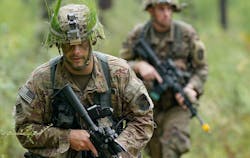How artificial intelligence (AI) could help infantry warfighters make better decisions during combat
WASHINGTON – A forward-operating Army unit is under heavy fire and poised to attack. The soldiers are armed with small arms weapons, shoulder-fired missiles, drones and even helicopter support, yet commanders need to make decisions about which among many targets to hit. Kris Osborn at The National Interest reports. Continue reading original article
The Military & Aerospace Electronics take:
15 July 2020 -- Which targets should be hit first? Are any target points about to fire incoming weapons? Do any of the target vehicles contain innocents or non-combatants? What if there are integrated threats woven together from several different angles and points of view at one time?
Bruce Jette, assistant secretary of Army for acquisition, logistics and technology, examines this predicament, explaining that emerging applications of artificial intelligence (AI) are beginning to perform AI on AI in a collective decision-making fashion.
Combat decisions invariably involve a complex tapestry of interwoven variables, including things like sources of incoming fire, enemy size and location, terrain and identifying multiple points of attack. Other important variables are also additional air or surface supportive fires options and, clearly and simply, deciding which weapons to use and where to use them across an entire unit.
Related: Artificial intelligence (AI) changes strategies for B-2 and F-35 combat aircraft
John Keller, chief editor
Military & Aerospace Electronics
